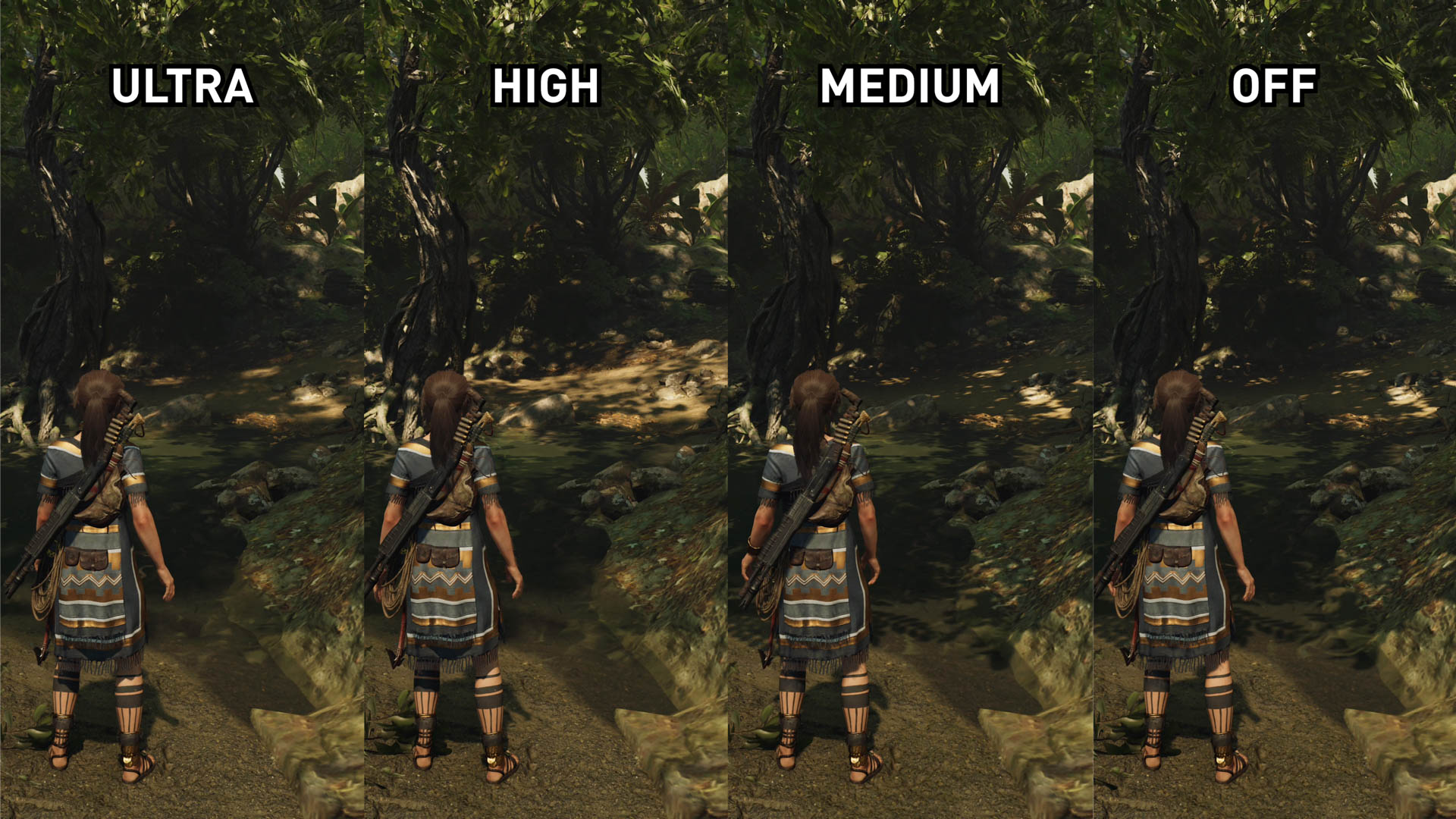Just installed the ray tracing Shadow of the Tomb Raider patch and am running it on my RTX 2080 Ti. I'm walking through the Dia de Las Muertas beginning level of the game. The difference in the shadows are subtle, but can be perceived (unlike in the screenshots of this article): the difference is the real-world accuracy of the shadows. For example, with ray tracing ON, I'm walking towards the light from the "La Casa Mexicana" neon light. Lara's shadow becomes more diffused and fades away as I walk towards the light just like a shadow would in real life, since the neon light isn't a direct light source, like the sun, for example. With ray tracing turned OFF, shadows have a long, non-diffused shadow even as I get closer to the light.
With ray tracing ON, on the other side where people are dancing, you can watch the shadows diffuse and elongate as they spin each other around in front of the La Casa Mexicana neon light next to the stage. For the little boy with a sparkler around and around, there are shadows being cast correctly for the tables, metal pole filled with pinwheels, and boxes around him as he twirls the sparkler around and around. When ray tracing is turned OFF, I don't see any shadows, even as the boy twirls the sparkler around and around, which isn't how light and shadows work at all in the real world.
After Lara climbs the gate, with ray racing ON, the shadows cast from Lara's body off the lighting from the candles are super slight and very diffused, as it should be since candles don't have much luminance. But when ray tracing is OFF, the shadows are super deep and not diffused off Lara's body, almost as if the candles actually had a lot of luminance. The non-ray traced shadows are obviously not accurate in the real world.
These are subtle detailed touches to the game. I can't definitively can't say there is a huge improvement or a "super-WOW" factor with what Square Enix used ray tracing for, but it does at more realism to the game. The use of ray tracing for global lighting in Metro Exodus definitely was a much bigger deal, since it made the fear factor go up quite a bit for me since my brain no longer rejected the lighting as fake. The shadow ray tracing used of ray tracing in Shadow of the Tomb Raider is probably more on the "nice-to-have" feature list rather than a "must-have". But it definitely is a nice feature, making the game more realistic.
